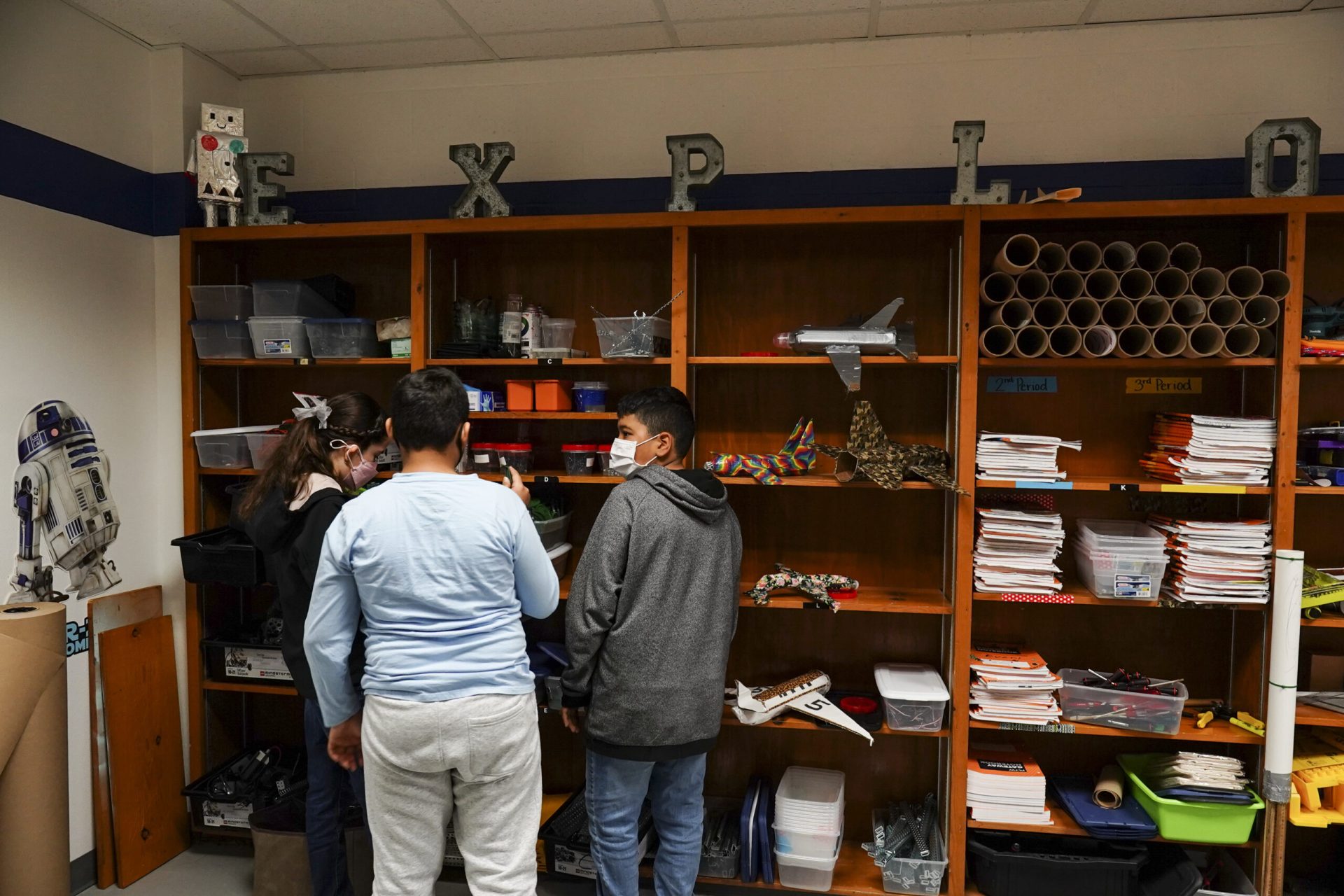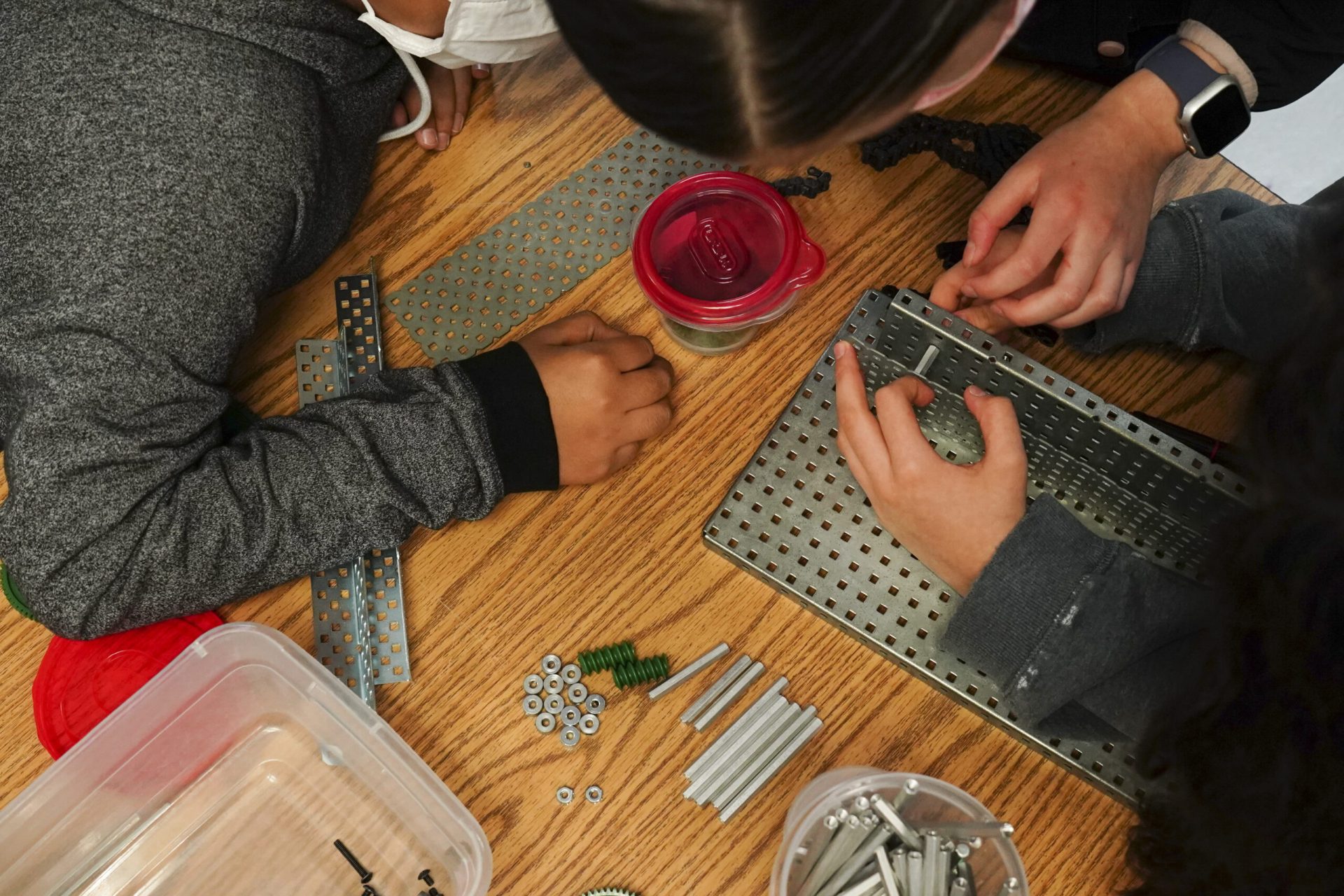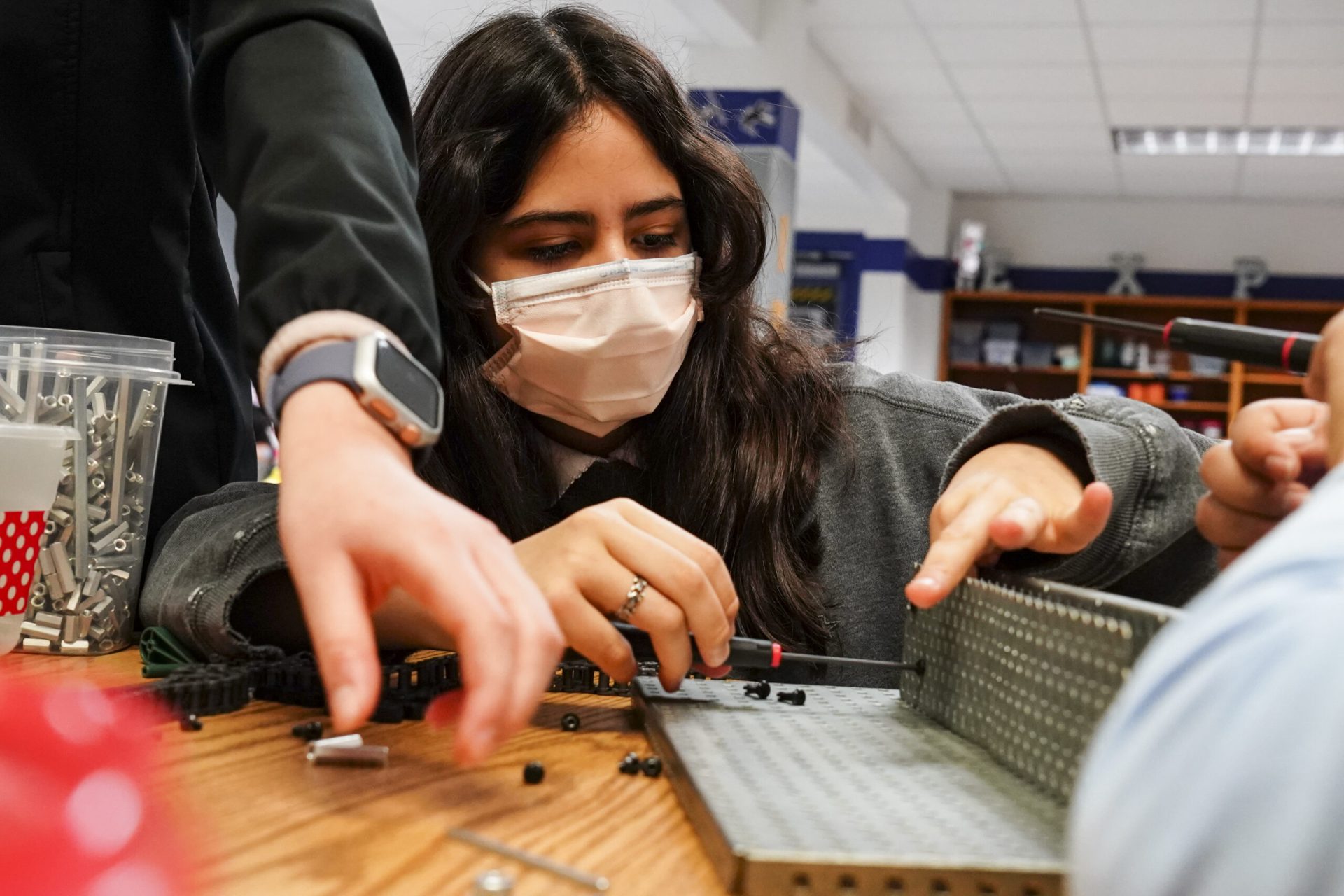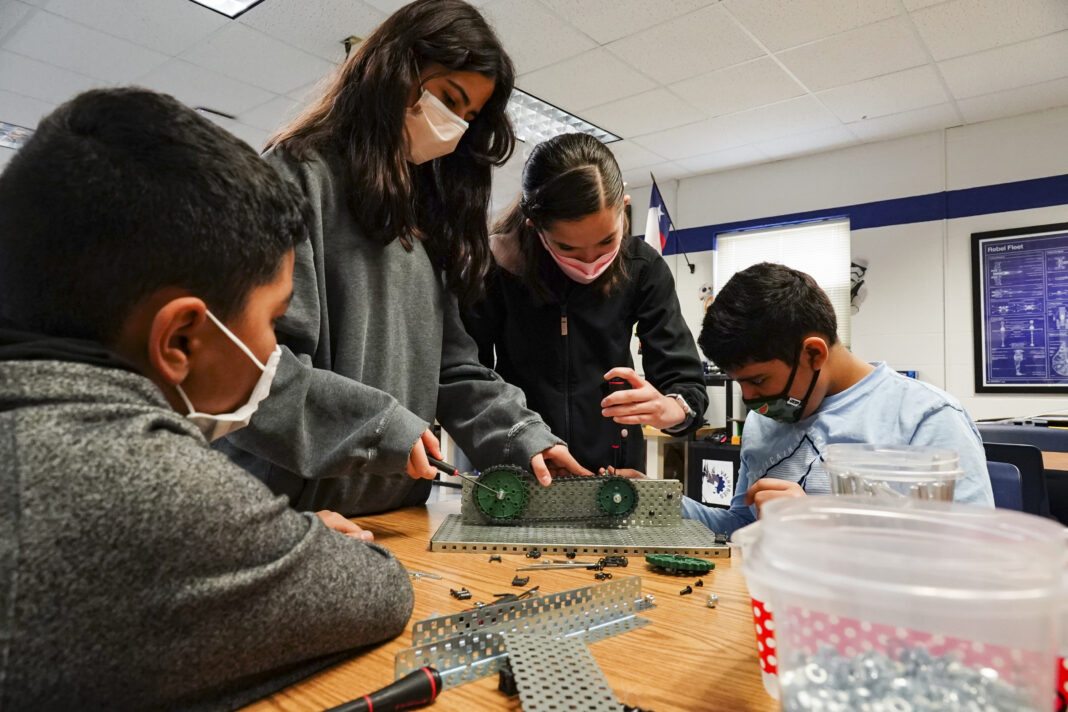HARLINGEN — They leaned closely toward their project, four girls around a table collaborating on a single task with many parts.
“We’re working on a worm and wheel project,” said Sophia De Los Santos, a sixth grader in Linda Salinas’ Automation and Robotics class at STEM 2 Preparatory Academy.
“We use Mythbadger, we use Project Lead The Way and YouTube videos for instructions for building the worm and wheel,” said Sophia, 12. “We put it together and we test it to see how it works.”
Mythbadger is a series of YouTube videos produced by the Project Lead the Way program at a school in Missouri. Project Lead The Way, or PLTW, is a nonprofit organization which provides hands-on curriculum projects in the STEM subjects — science, technology, engineering and mathematics.

Speaking of “how it works”, that seems to be a key talking point not only in Sophia’s Automation and Robotics class but also in the “Flight and Space” and the “Design and Modeling” courses. Salinas teaches all three of these courses.
Under her tutelage the kids have engaged in a range of projects such as building small airplanes complete with a runway down the center of class, an innovative way to feed giraffes at the Gladys Porter Zoo and developing toys for children with specific challenges.
“As PLTW teacher, I utilize the curriculum and my experience as an educator to create transformative learning experiences for my students,” Salinas said. “Mark Twain said it best, ‘Explore. Dream. Discover.’ Here in the Innovation Center, we do just that! We provide opportunities for creativity to thrive.”
You can see that kind of robust and creative learning throughout the classroom, the “Innovation Center” where young minds pool their individual talents to achieve novel solutions to real-life challenges. They learn about Allen wrenches, bevel gears, and cams, Newton’s Laws of Motion, and the dynamics of air and space flight.

Isaiah Cruz, 12, and his project partners had just built a crank and slider.
“We used two lock and collars on it,” said the sixth grader. “We have a slider —” he pointed to the other side of the slider, “that’s the handle.”
“You would see this in real life on a train,” added his project partner Gideon Rodriguez, 11.
“This was a very easy build,” he said, adding it took only 30 to 45 minutes.
The windmill project, by all accounts, was significantly more difficult.
“That was actually a project we did from scratch,” he said. “We had to design it first, then we had to build it, so we didn’t have anything to base it off of. This has been so much fun. It’s very hands-on, you get to build stuff.”
Sophia and her fellow project partners were having a blast building “stuff” like their worm and wheel — but that’s just the beginning.
“The worm and wheel is used in elevators,” said Sophia.
“And in tuning musical instruments as well,” added her project partner Eliana E. Huerta, 11.

Sophia said, “It’s fun to construct and take apart and learn what it’s made for. If it works, good, then we take it apart and if it doesn’t, we try it again.”
She and Eliana spoke with compelling and jubilant energy about their work in the Innovation Center. Eliana gave an impressive narrative about the experience and it’s application for future challenges.
“This is going to be for the future of the world,” Eliana said with authority.
“We’ve got to make sure we know how to do all these assignments and we’ll be using this a lot more in the future,” said Eliana. “Us as children, we need to learn right now for later on in life.”
They gave ready answers to questions about their work.
“You know the importance of a lock and collar, right?” Salinas asked.
Sophia gave the quick and capable explanation.
“A lock and collar secures the metal bar in the build to make it stay down,” she said.
Sophia found the worm and wheel project fairly easy. A more difficult task was the wheel and axle.
“That one was really challenging,” she said. “The way the instructions were, and how you would construct it, was a little unique and different.”

And again, like Gideon, Eliana found the windmill project a worthy obstacle to overcome, and her group achieved it well through pooling their individual capacities.
“We all worked as a group,” she said, “and we all used our own ideas to make it.”
Some key pieces in the Harlingen school district’s Strategic Plan are authentic real-world learning and implementation of the Four C’s: Communication, Collaboration, Creativity, and Critical Thinking. It has been a master plan manifested in many endeavors.
No truer example of those principles could ever be found than that at the Innovation Center, and the students present well every aspect of their work and the philosophy of that work.
“It’s really fun because it’s a group project,” said Eliana. “We all learn how to communicate with each other and collaborate which is something that we’re going to be using later on in the future: collaborating with others.”
Through this collaboration of individual talents and capacities, novel solutions are giving birth to fresh possibilities in an uncertain world.




